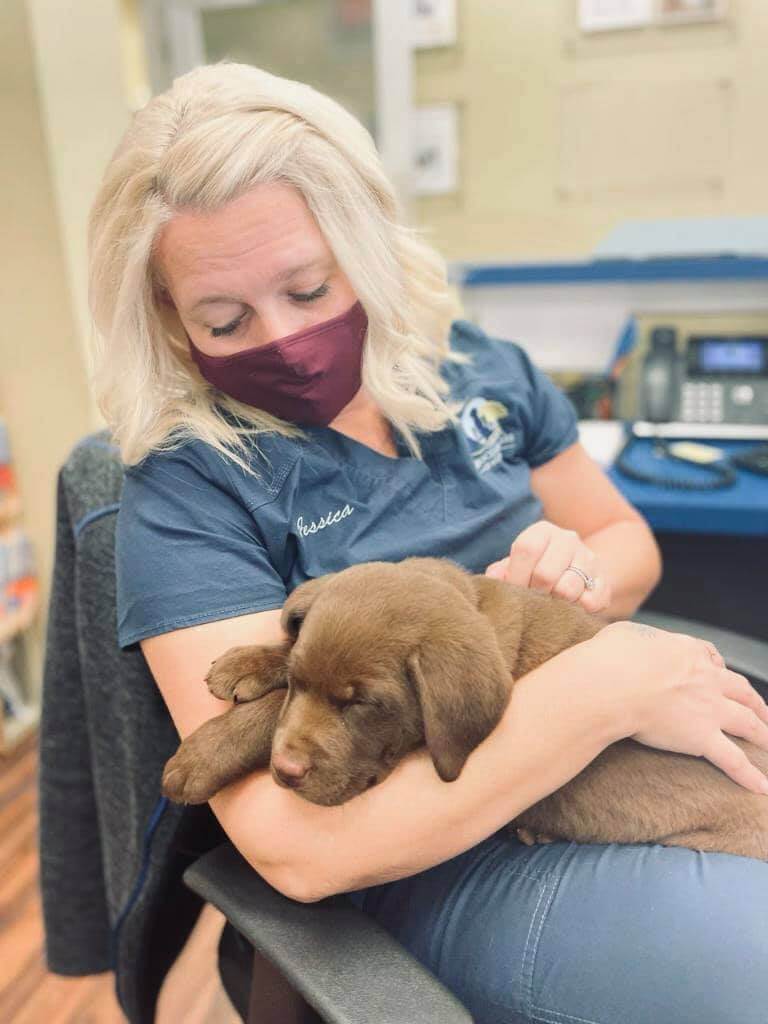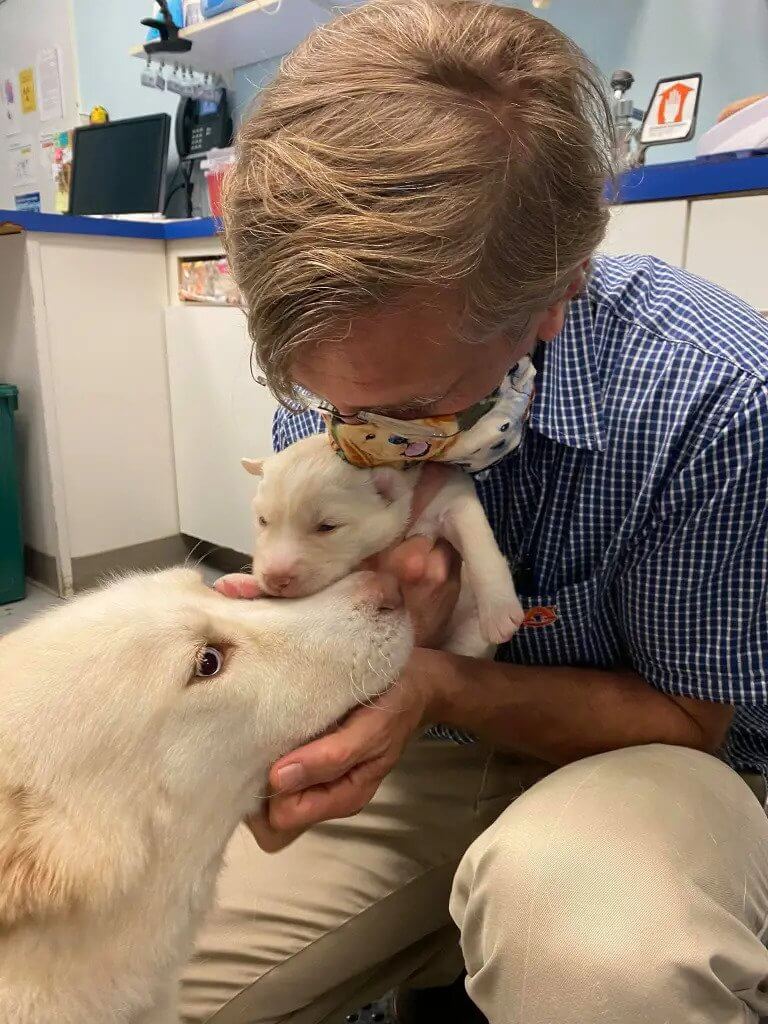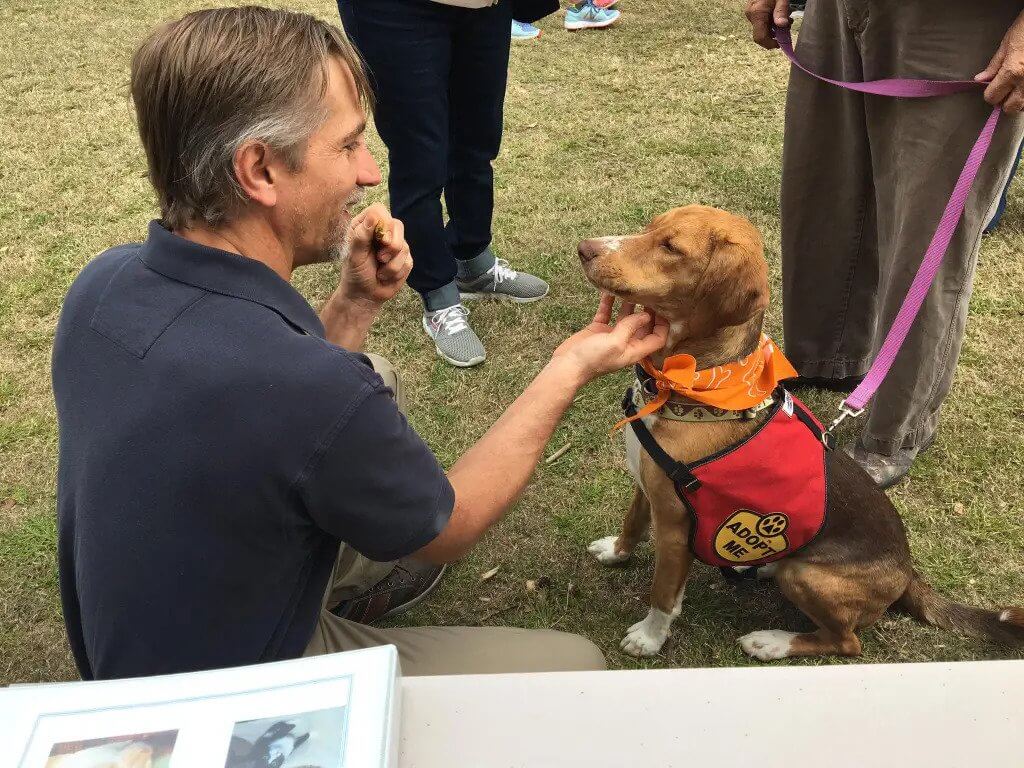
“Why won’t Joey behave? I’m thinking about sending him to obedience school. Will this stop his annoying behaviors? Why won’t he just be a good dog?” This kind of question is brought up to me often and seems like such a simple question. Teaching a dog his place in life, making sure that he understands who the “master” of the pack is what will resolve this, right? “They are pack animals and need to know you are their leader” explained the client’s spouse “She is just too soft on him and that is why he doesn’t listen to her”.
Before we can begin to talk about what type of training is the best way to get your dog to behave, we need to re-evaluate how we think about our relationship with our dogs. I have been practicing small animal veterinary medicine for 30 years. During that time I have seen my patients literally move out of the backyard and into our homes, many times right into our beds. When we lived at arm’s length from them, it was easy to be detached and to have a contractual relationship; we provide food and shelter as long as they fulfill their obligation of work or companionship. With them moving into our homes, we noticed their individual character and quirks and amazing intellect and compassion. How could we not soon fall in love with them? The relationship no longer is a contractual obligation, but rather one of reciprocated love.
There is a long standing view and there has been much written about dominance and how dogs view their mixed families as their packs. A true Canid pack is composed of related dogs born into a social group. This, I am certain, does not describe your household. Our family, as are many of yours, includes unrelated dogs that came into our home as young adults, not newborn puppies. These relationships, along with other humans, cats, and other creatures may live in your home, are imposed upon the resident dog. By assuming that humans are part of the pack, we believe we should be the leaders of the pack. I may agree with you and Caesar Milan on this one, but perhaps we disagree on what it means to be a leader.
We are more alike than we are different. Perhaps this is why we have such a long lasting relationship with dogs. Dogs are born into an extended family group, making them more closely related to each other than they are to most dogs in another pack. Although we call it a pack, perhaps a better descriptor may be a Clan or Tribe. The pups require extensive and extended parental care before they are able to care for themselves and there is group cooperation and help with caring for the pups. Dogs use play to develop social skills and communicate extensively vocally and non-vocally. Their social system is based on deference rather than dominance, and this deference governs differing roles in differing contexts. “Fights for status or control are notoriously rare among wild canids” (Karen Overall, MA, VMD, PHD, DACVP, CAAB). The same, in spite of how it may seem in today’s world, is true for us humans. Healthy relationships are structured by negotiation and deference rather than by violence or the threat of violence. Dogs are not trying to dominate you, but they are likely confused by you.

We humans decided a very long time ago that we are no longer a part of the natural world and set out to create our own world of towns and cities. We have done this for so long; we even forgot that we were once a part of the natural world. Living on our own, we created our own laws and rules and social order. We have so many social rules and we have been practicing them on ourselves for so long, that we are confused when others, such as our pets, have no clue as to what we are doing or what our intention is. We have social conventions that are completely foreign to our dogs such as waiting your turn or sharing a treat or not interrupting when someone is talking. At times our behaviors can be quite terrifying as many of us have been taught to look someone in their eyes when speaking or firmly shake a hand. Worse, there are those who hold animals as “lesser than” and that because we were granted dominion, dogs must submit to us. Assumptions such as the pack order, social rank and dominion have caused us humans to behave badly and these assumptions have been proven to be wrong.
Nearly every clinical behavioral case presented to me can be boiled down to one simple common diagnosis: Anxiety. Anxiety is a feeling stemming from uncertainty about future events or consequences. Social anxiety is specific to the context of an interaction and what the outcome or consequence may be. Simply put, it is difficult for dogs living with us. Left to their own choices, they nearly always make poor choices based on our expectations. To be fair, it’s not that they are unintelligent or malicious, but that they simply have a dog’s brain and it is hard wired and pre-programmed to be successful using dog rules. Dogs, without the right kind of help from their humans, are applying dog social rules within a human social context. It’s like you may be playing Hearts when everyone else is playing Spades. How frustrating to know the rule that is supposed to provide a reward, yet each time you do it you lose. Happening time and time again, can result in frustration and eventually aggression or worse, total apathy.
It is important to know that dogs are social and live a life similar to ours. They have the necessary skills of being a social creature such as communicating when they are uncertain or needy to other members of their family. This means that dogs are well adapted, along with a few centuries of selective breeding, to looking to their people for guidance. People become concerned about their dog’s behavior when the dog no longer looks for that guidance. Most cases my client didn’t notice or misunderstood their dog’s previous attempts at gaining information about how they should behave. Dogs sometimes ask questions by chewing on something and wait for the human to respond. Sometimes they do this by barking or pawing at you. Ask anyone who lives with another suffering with anxiety, and they will tell you that anxious individuals can be difficult to live with. Anxious individuals have a tendency to provoke the situation in order to gain information. They are asking, just not perhaps in the healthiest or most constructive way.
We have to first recognize that in this relationship there must be better communication in order for us to know what our pets are asking and for our pets to be able to listen to our direction. The healthiest relationship we have with our dogs is a paternalistic one. We, by the very nature of being human and having an understanding of human social order, have the knowledge and perspective to know what is the best and most desirable behavior for our dogs. We love our dogs and want them to be happy, safe and have a wonderful life in our family. We expect our dogs to do as we say not because we have dominion upon them or can alpha role them, but rather out of deference to our knowledge and the love we have for them. This is not unlike our own human families and the relationship of a parent and child, with the exception that with proper care and nurturing our human children will one day be independent and fully capable of making their own decisions without guidance. Our dogs will never leave home or one day be independent and will always need our guidance while living in this human world.
If I could have a conversation with my dog, it would sound something like this: “Lexi, you know I love you. And I want you to be happy and healthy and have a great life with us. But, you are making some really bad behavior choices and it is causing a lot of disruption. I know it can be confusing and sometimes scary out there. I want you to know that there is only one rule you have to know and complying with this rule gives you everything you want. There is only one thing you have to do: Listen to me. Trust me. I love you and I will only tell you to do something that is good for you. Everything you need and want will come if you simply listen to me” That’s it. Simple, right?
OK, so we can’t literally have the conversation, but we can show our dogs through our behavior what the rule is. It’s a long journey and one that takes lots of practice and patience and consideration but one that is well worth it. Our goal is to teach your dog to take all of their behavioral cues from you. In order to do this, we must get our dogs to “turn on their listening ears” as my 1st grade teacher Sister Anne would say. We can do this by simply using our dog’s pre programmed way of asking a question- to sit and look. Every interaction you have with your dog, whether it is feeding him, petting her, or just saying hello, not matter how trivial, is initiated by you giving the directive, sit. When your dog complies, they are rewarded by you continuing the interaction. They gain attention, food and other needs fulfilled by behaving calmly, sitting quietly and looking to you. Do your best to only give attention when you initiate the interaction and they comply with your directive. One exception- Any time your dog sits and looks at you lovingly, without any direction, be sure to lavish your dog with all sorts of love for being that wonderful and smart dog and asking the right question.

